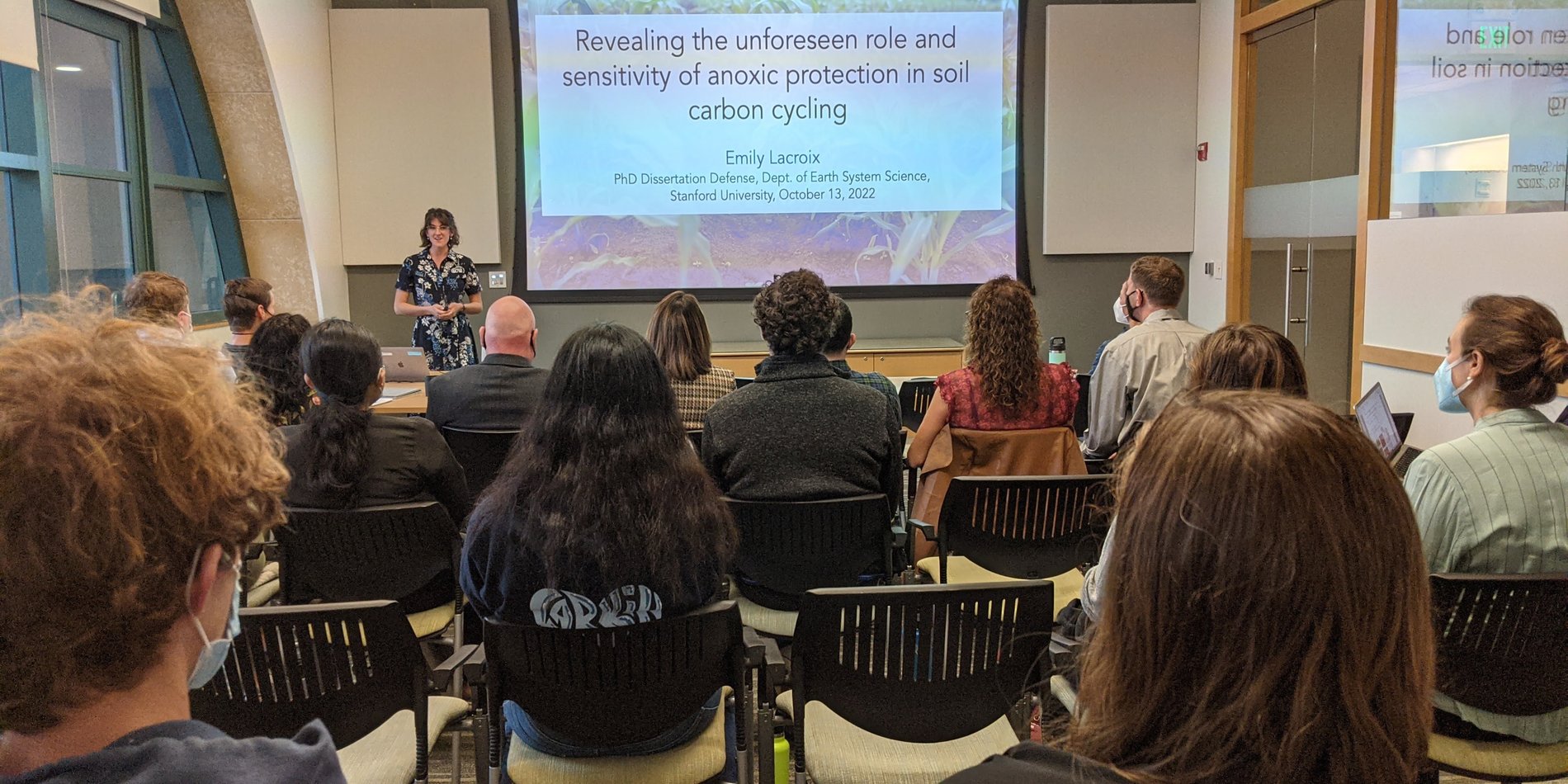Congratulations to Dr. Tianmei Wang
Stanford University
***Ph.D. Oral Defense***
Unraveling and predicting the coupled impacts of climate change and soil arsenic on rice yield and grain quality

Tianmei Wang
Monday, Sept. 18, 2023Green Earth Sciences 365
Department of Earth System Science
Advisor: Dr. Scott Fendorf
In Southeast Asia, naturally occurring arsenic (As) is mobilized through biogeochemical and hydrological processes from sediments into groundwater and ultimately accumulates in rice paddies via irrigation amplifying endemic arsenic within soil. Arsenic acts as both a phytotoxin, causing yield loss, and as a human toxin, being linked to cancers. Moreover, rising temperatures intensify the release of arsenic into porewater making it available for biological uptake. Simulating the year 2100 climate with increased temperature and CO2 levels, Californian rice faces a 40% yield decrease and doubled inorganic arsenic concentration in grains. Thus, quantifying the interplay between soil arsenic and climate change is crucial for predicting future impacts on rice yield and grain quality.My research has three aims: 1) Assess the combined impact of heat stress and soil arsenic on Californian rice yields and develop a predictive model projecting their impacts. 2) Understand how climate change affects biogeochemical cycles governing arsenic release to porewater within rice paddies. 3) Determine the coupled impacts of climate change and soil arsenic on grain toxin and micronutrient levels in Bangladeshi rice. I employ a combination of greenhouse mesocosm studies, geochemical analyses, and modeling approaches to investigate the effects of projected climate change and soil arsenic on rice yield and grain toxins and micronutrients content.My research (Chapter 2) reveals that elevated temperatures lead to increased arsenic release into porewater, which combined to diminish rice yields. Above an arsenic threshold of 12.7 mg/kg, yields decrease with higher initial soil arsenic levels, particularly at the current temperature of 33 ℃. Beyond 35 ℃, heat stress becomes the primary determinant of rice yields, overriding soil arsenic. Under natural background soil arsenic conditions (7.2 mg/kg), heat stress alone at 40 ℃ decreases rice yield by 87.2%. I further show (Chapter 3) that climate, mainly temperature, controls the timing of arsenic release into porewater after paddy flooding, while the initial soil arsenic loading influences the peak porewater concentration. Finally, my work (Chapter 4) reveals that climate-induced yield decreases by 11.4% for Bangladeshi rice, with yield decreasing 27.3% when combined with increased soil arsenic. Elevated temperatures accelerate arsenic release into porewater, but plant physiology, such as root density and iron plaque formation, partially counteract this phenomenon. The combined climate and arsenic impact results in a significant 33.8% increase in grain arsenic and a 32.3% increase in cadmium. Elevated temperatures alone boost micronutrient (Mn, Zn, Cu, Mo) accumulation, but soil arsenic restricts Ni and Zn uptake.Collectively, my research enhances our ability to predict changes in rice yields under the combined influence of climate change and increasing soil arsenic levels, deepens our understanding of how climate change alters biogeochemical cycles related to arsenic release, illuminates rice grain toxin and micronutrient levels with changes in soil arsenic loading, and establishes a foundation for potentially developing mitigation methods while identifying crucial factors for monitoring rice food safety.



